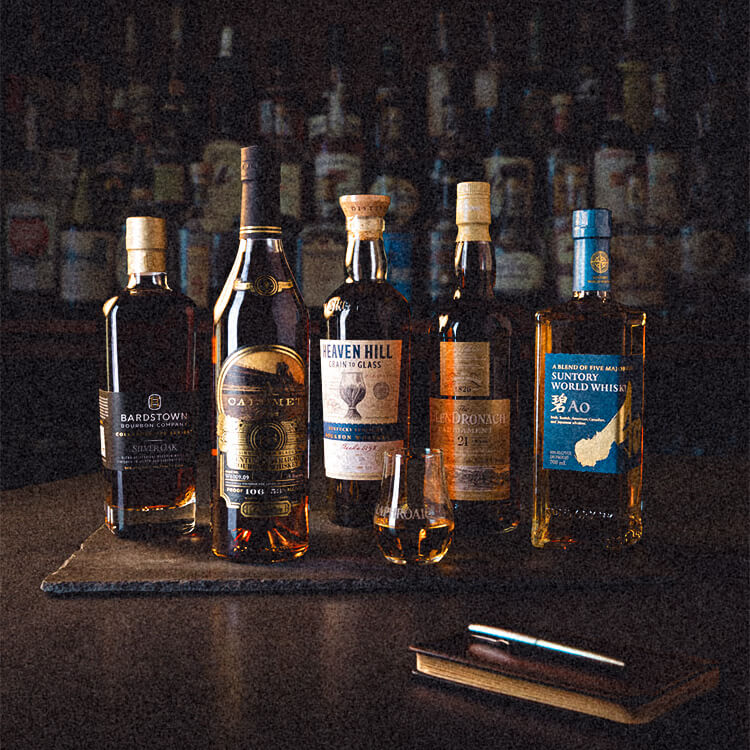Embarking on a journey into whiskey collecting is not merely about building an impressive array of bottles; it’s about cultivating a deeper appreciation for this storied spirit. Whether you are a novice enthusiast or a seasoned sipper looking to formalize your passion, starting and maintaining a whiskey collection can be a rewarding endeavor. This comprehensive guide will provide you with the essential tips for curating a collection, selecting noteworthy bottles, and ensuring proper storage to preserve your whiskey’s quality.

1. Understanding the Basics of Whiskey
Before diving into collecting, it’s crucial to understand the different types of whiskey available. Whiskey, or whisky in some regions, includes a variety of styles such as Scotch, Bourbon, Rye, and Irish whiskey, each with its distinct characteristics. Scotch whiskies, for example, are made in Scotland and can be single malts or blends. Bourbon, primarily from the USA, must contain at least 51% corn. Irish whiskey, typically triple-distilled for a smoother finish, and Rye whiskey, known for its spicy profile, offer other distinct tastes.
2. Starting Your Whiskey Collection
- Choosing a Focus: Begin by deciding the focus of your collection. Some collectors choose to specialize in a particular type of whiskey, such as Scotch or Bourbon, while others may opt for award-winning or limited edition bottles from various categories. Your focus could also be thematic, like whiskies from closed distilleries or those with unique maturation processes.
- Educating Yourself: Knowledge is your best tool. Attend tastings, visit distilleries, and read extensively about whiskey. Understanding the nuances of distillation, aging, and regional influences will enhance your ability to assess and appreciate different whiskies.
- Setting a Budget: Determine how much you’re willing to invest in your collection. Whiskey collecting can be expensive, but there are treasures at every price point. Setting a budget helps prevent overspending and guides your purchasing decisions.
3. Acquiring Bottles
- Where to Buy: Purchase from reputable sources such as specialized liquor stores, auctions, or directly from distilleries. Be wary of counterfeit bottles, especially when buying rare or highly sought-after whiskies.
- What to Look For: Start with whiskies that you enjoy drinking. From there, look for bottles that have potential for appreciation in value, such as limited releases or bottlings from notable distilleries. Bottles with historical significance or those from a distillery’s inaugural or final batch can also be valuable additions.
- Building Relationships: Develop relationships with store owners and distillery staff. They can offer valuable insights, notify you about new releases, and sometimes provide access to rare bottles.
Ready to begin building your impressive collection? Explore our diverse range of whiskies and discover your next prized bottle today! Shop Our Whiskey Collection
4. Expanding and Curating Your Whiskey Collection
As your collection grows, refine your focus based on what you learn and love about whiskey. This could mean focusing on a particular region like Islay Scotch for its peaty whiskies, or branching into more obscure categories like Taiwanese or Japanese whiskey.
- Record Keeping: Maintain detailed records of your purchases, including the type of whiskey, the distillery, the year of bottling, and the price. This is not only useful for tracking your inventory but also for insurance purposes.
- Networking: Engage with other collectors and join clubs or online forums. Sharing experiences and swapping bottles can enhance your collection and deepen your knowledge.
5. Storing Your Whiskey
- Proper Storage Conditions: Store your whiskey bottles upright to prevent the cork from deteriorating due to prolonged contact with high-strength alcohol. Keep them out of direct sunlight in a cool, stable environment. Extreme temperature fluctuations can damage whiskey’s complex structure.
- Display and Security: If displaying your collection, ensure the storage area is secure and not prone to vibrations or direct light. Use cabinets designed for storing spirits, or invest in custom shelving that allows for easy viewing and access without compromising the whiskey’s condition.
- Insurance: For high-value collections, consider purchasing insurance. Documenting and valuing each bottle accurately is crucial in this regard.
6. Enjoying and Sharing Your Whiskey Collection
While collecting whiskey can be seen as an investment, the true joy often lies in sharing and enjoying the whiskey. Host tasting events to experience different whiskies with friends or fellow enthusiasts. This not only allows you to showcase your collection but also to enjoy it actively.
7. Continuing Education
The world of whiskey is constantly evolving. New distilleries open, production methods change, and new products are released. Continuing your education through tastings, courses, or whiskey-related events is essential to keep your collection relevant and to maintain your enjoyment of the hobby.
Conclusion
Starting and maintaining a whiskey collection is a dynamic and enjoyable pursuit that combines the pleasures of tasting, the thrill of the hunt, and the satisfaction of curating a personal selection of spirits. By focusing on what truly intrigues and delights you, ensuring proper care and storage, and continuously expanding your knowledge and network, you can build a collection that not only appreciates in value but also brings immense personal satisfaction. Whiskey collecting is not just about the bottles themselves but about the stories they tell and the experiences they offer. Cheers to your collecting journey!


